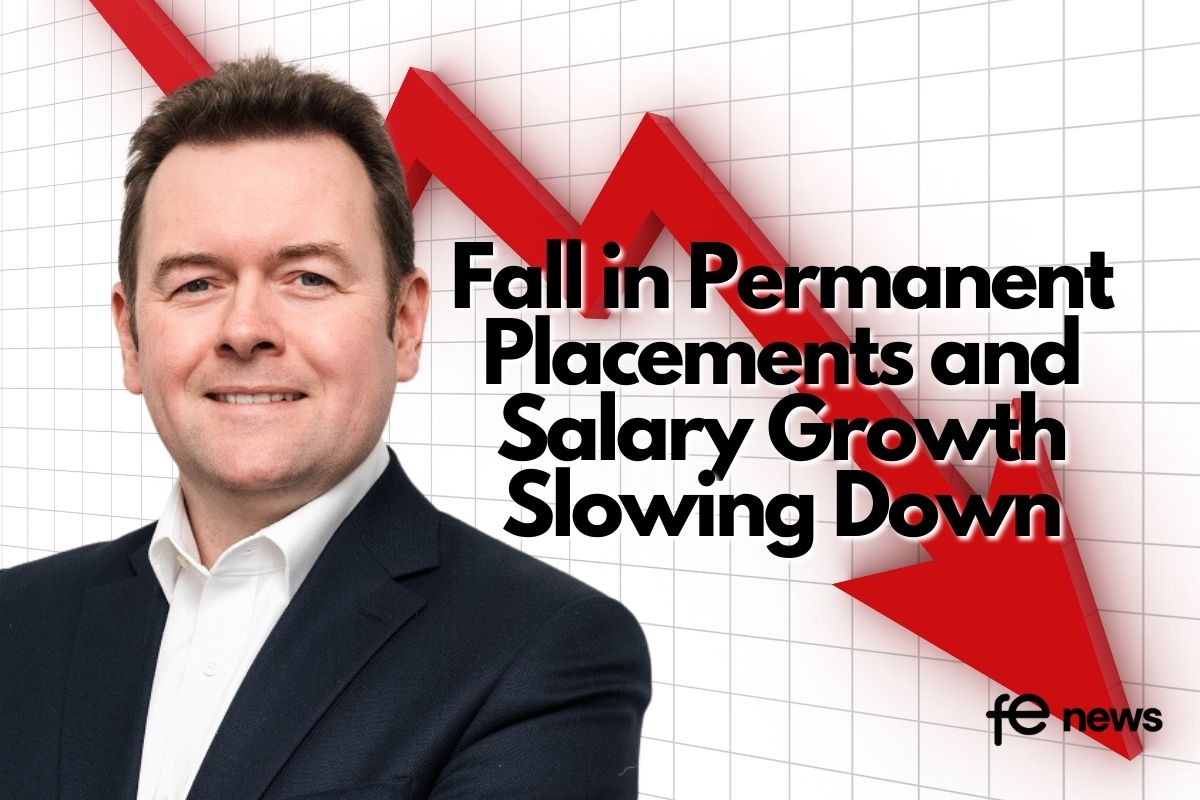ONS Labour Market Figures – 1st time in 50 years: now as many vacancies as there are unemployed people – Sector Reaction

Latest ONS Labour market figures: unemployment dropping to 3.8%. vacancy rate remains high at 1.3 million, and economic inactivity continues to rise to 21.4%.
The latest ONS Labour Force Survey (LFS) estimates for December 2021 to February 2022 show the employment rate is unchanged on the quarter, while the unemployment rate decreased. Over the same period, the economic inactivity rate has increased slightly.
The UK employment rate was largely unchanged on the quarter at 75.5%, but still below pre-coronavirus (COVID-19) pandemic levels. The number of full-time employees increased on the quarter; however this was offset by a decrease in part-time employees. While the number of self-employed workers is still well below pre-coronavirus pandemic levels, it has increased slightly in the recent quarter.
Our most timely estimate of payrolled employees for March 2022 shows a small monthly increase (up 35,000 on the revised February 2022) to a record 29.6 million.
The unemployment rate for December 2021 to February 2022 decreased by 0.2 percentage points on the quarter to 3.8%. Those unemployed for up to 12 months decreased during the latest period to a record low. Meanwhile, those unemployed for over 12 months continued to decrease from the peak in July to September 2021.
The economic inactivity rate increased by 0.2 percentage points to 21.4% in December 2021 to February 2022. This increase was driven by those who are economically inactive because they are looking after family or home, retired, or long-term sick.
IES analysis found a further sharp fall in unemployment disguised an unexpectedly large rise in the number of people out of work and not looking for work (‘economically inactive’) with the number not working due to long-term ill health seeing the largest annual increase since comparable records began in 1992 (up by 190 thousand, to 2.34 million – its highest since 2004).
The number of job vacancies in January to March 2022 rose to a new record of 1,288,000
The number of job vacancies in January to March 2022 rose to a new record of 1,288,000. However, the rate of growth in vacancies continued to slow down. Over the quarter the number of vacancies increased by 50,200 with the largest increase in human health and social work.
Growth in average total pay (including bonuses) was 5.4% and growth in regular pay (excluding bonuses) was 4.0% in December 2021 to February 2022. In real terms (adjusted for inflation), growth in total pay was 0.4% and regular pay fell on the year at negative 1.0%; strong bonus payments over the past six months have kept recent real total pay growth positive.
Previous months’ strong growth rates were affected upwards by base and compositional effects. These initial temporary factors have worked their way out. However, we are now comparing the latest period with a period where certain sectors had increasing numbers of employees on furlough because of the winter 2020 to 2021 lockdown. Therefore, a small amount of base effect will be present for these sectors. This will not be to the degree we saw when comparing periods at the start of the coronavirus pandemic.
Chancellor of the Exchequer, Rishi Sunak said:
“Today’s stats show the continued strength of our jobs market, with the number of employees on payrolls rising once again in March and unemployment falling further below pre-pandemic levels.
“We are helping to cushion the impacts of global price rises through over £22 billion of support for the cost of living this financial year. We’re also helping people to find new jobs, and ensuring work always pays as this is the best way to support households in the longer term.”
Sector Reaction to the ONS Labour Market Figures:
The Institute of Employment Studies complete a snapshot analysis of the ONS figures finding:
IES analysis found a further sharp fall in unemployment disguises an unexpectedly large rise in the number of people out of work and not looking for work (‘economically inactive’) with the number not working due to long-term ill health seeing the largest annual increase since comparable records began in 1992 (up by 190 thousand, to 2.34 million – its highest since 2004).
Economic inactivity for those aged over 50 has also continued to rise, up by more than 200 thousand in the last year and by more than 600 thousand since the pandemic began. Employment growth also remains very weak, with employment flat on the quarter and still nearly 600 thousand below the start of the pandemic. This continues to happen despite record levels of vacancies, with now as many vacancies as there are unemployed people, for the first time in at least fifty years.
Separate earnings data published today also shows that ‘real’ pay, after adjusting for inflation and not including bonuses, fell by 1.1% year on year – the largest fall since 2013. This has inevitably been fuelled by rising inflation, with decent nominal pay growth (of 4.1% on the year) not doing enough to offset this. However total pay growth was marginally positive on the year, reflecting exceptionally high bonus payments in this period.

Commenting on the figures, IES Director Tony Wilson said:
“This data shows that the living standards crisis is already starting to bite. With inflation now well above five per cent, real pay excluding bonuses has seen its largest fall since 2013 and will fall further in the coming months. However the picture for those out of work is if anything worse, with employment flat overall, four hundred thousand more people out of work than before the pandemic began, and a record rise today in the number not working due to long-term ill health. This is in turn fuelling acute labour shortages which in turn will be holding back growth and may fuel further inflation. For the first time in at least fifty years, there are now as many vacancies as there are unemployed people.
“This triple whammy of falling pay, more people out of work and labour shortages is only going to get worse as inflation continues to rise through the summer. The Spring Statement missed an opportunity to address this, but we need urgent action now to protect incomes and raise participation, especially for older people and those with health conditions. Employers will need to do more too, and make sure that jobs are advertised and designed in ways that are accessible and inclusive for older people.”

Responding to the latest ONS figures, Stephen Evans, Chief Executive of Learning and Work Institute, said:
“This February, people saw the biggest single month fall in regular pay in real terms since December 2013. But this cost of living crisis is not being experienced equally. Bonuses in sectors such as finance mean some are seeing rising pay, while those on the lowest incomes saw their benefits rise by just 3.1% yesterday, far lower than inflation. This is before the rise in National Insurance and the energy price cap, so the pain is only going to grow without action.
“Meanwhile, we continue to see people falling out of the labour market altogether, especially carers, retired people and long term sick. Employers are crying out for staff, yet there are 1.25 million fewer people in the labour market than if pre-pandemic trends had continued. The Government must act swiftly to support people who are being hit the hardest, so we need a new Plan for Jobs, Growth and Living Standards.”

Jane Hickie, Chief Executive AELP (Association of Employment and Learning Providers) said:
“Today’s ONS labour market figures are further evidence of the UK’s growing skills gap. More and more employers are struggling to find the right people with the right expertise, as the economy recovers from the Covid-19 pandemic. Training providers themselves are also directly affected by this situation. More of our members than ever are telling us they’re struggling to recruit and retain employees. Coming at a time of rising costs, and a decline in living standards, this has the potential to cause real issues for the sector.
“We need to get serious about tackling the skills gap. This means a renewed focus on lifelong learning and ensuring that accessible and affordable training is available for people at all ages and levels. This, of course, requires investment in apprenticeships, traineeships, and adult education, but also a shift towards an employer and learner-led system which treats providers of all types fairly.”
Ben Harrison, Director of the Work Foundation, a leading think tank for improving work in the UK:
“Today’s statistics shows a mixed picture for the UK’s labour market recovery with employment stationery at 75.5% and unemployment dropping to 3.8%. However, the vacancy rate remains high at 1.3 million, and economic inactivity continues to rise to 21.4%.
“Crucially, workers and job seekers are being hit by the largest fall in living standards on record as inflation outpaces wage growth. Many are struggling to make ends meet as regular pay growth is at 4% (excluding bonuses) but inflation continues to rise, with the Bank of England predicting inflation will reach 8% in Spring and could rise further later in the year.
“The Chancellor’s Spring Statement failed to provide economic security to the most vulnerable in society, including those in low paying and insecure employment. Universal Credit beneficiaries saw their benefits uprated by just 3.1% in April, lagging behind inflation. The Chancellor must return to despatch box and, at a minimum, raise Universal Credit in line with predicted inflation to provide security to those at the sharp end of the cost of living emergency.”

Comment from James Reed, Chairman of Reed.co.uk, on the ONS Employment Data release:
“The economy is facing a crunch point as businesses contend with serious challenges, from rapidly rising inflation to severe labour shortages. The jobs boom that began last year continues to be reflected in the ONS’s labour market statistics. With job postings on Reed.co.uk in March increasing 18% year-on-year and 14% month-on-month, this trend shows little sign of slowing. But with economic growth now as low as 0.1% and unemployment at historic lows, the jobs boom is in danger of becoming a jobs overload.”
“The difficulties businesses now face in hiring staff, are having a knock on effect on supply chains, production output and the quality of goods and services. This is slowing the UK’s economic recovery from the pandemic.
“There are now 8.8 million people who are economically inactive in the UK, which is 600,000 more than at the start of the pandemic. This is a symptom of what I call ‘The Great Lie Down’, with many workers leaving the workforce altogether, some through long term sickness and others preferring early retirement or different lifestyle choices. If these workers are to be coaxed back, they will need convincing with attractive employment arrangements, higher wages and better conditions and benefits.
“Currently, less than 20% of these people who are economically inactive say they would like a regular, paid job. However, if it was possible to help this group find work then that would be of great benefit to both them and the economy.
“While there is no easy fix to these challenges facing businesses, with average salaries continuing to increase month-on-month, workers have never had a better opportunity to find a job they love or secure a pay rise or promotion.”

Anthony Painter, Director of Policy and External Affairs at CMI said:
“The high employment rate is undoubtedly good news yet early signs of an economic storm can also be seen in today’s figures.
The labour market remains extremely tight and today’s figures underline the pressures organisations face when looking to attract and retain talent. Wage inflation continues to rise, but basic pay is falling short of cost of living increases.
Cost pressures on business are beginning to bite. The cost of living crisis might well reduce consumer confidence and slow spending – in turn leaving businesses with sluggish sales and a more cautionary attitude to hiring. Higher wage and national insurance bills will cut into profits and dampen investment levels.
Managers and business leaders can help ride this potential downturn through more imaginative packages for their employees. Now is the time to think about how firms can attract and retain workers. Salaries are important but, as our research has shown, good, flexible working conditions are also on employees’ minds – thinking creatively right now is more important than many may think.”

Minister for Employment, Mims Davies MP said:
“With the unemployment rate returning to the lowest we have seen in nearly 50 years, it is clear our Plan for Jobs has worked – protecting livelihoods and businesses throughout the pandemic.
“Behind these ONS figures we know this is a difficult time for many workers and families. We’re doing everything we can to help, with our Way to Work scheme which is supporting people coming through the doors of our Jobcentres to move into better paid, higher skilled work. As well as increasing the National Living and Minimum Wage all backed up by over £22 billion of targeted investment.”
Mark Cameron OBE, Chief Executive of The 5% Club:
“These figures really highlight the ongoing competition for skills and the need to think differently about the solutions to the very clear national skills challenge. With such low levels of unemployment and such a high vacancy rate, we need to access all the talent pools and to ensure lifelong opportunities are presented in the right form to all those who are able to work. From our perspective, there is a obvious role for workplace learning in all its forms to help with this challenge, and to ensure we can match people to the right jobs with considered and effective new-skill, re-skill and up-skill programmes. That way the talent that is everywhere can be targeted at the very best opportunities.”
Geoff Smith, CEO of emerging talent consultancy Grayce, comments on the latest ONS Labour Market figures:
“The latest ONS Labour Market figures show a record-breaking level of job vacancies, with one of the largest increases recorded in professional, scientific and technical activities. With this continued month-on-month growth, it’s becoming increasingly critical that government and business leaders find ways to address the growing digital skills gap. We now stand in a precarious position where the rate of technological advancement and change is not being matched with the right talent, which may leave us lagging as a leading nation in business and technology.
“One thing is certain: the digital skills crisis is evolving the employment landscape, and the competition for the right talent has never been fiercer. As digital and technological services continue to evolve at pace with widespread digital transformation across all industries, businesses need to hire talent that display aptitude in adapting their skillset. Harnessing this diverse talent will be absolutely vital if we’re to maintain the furious pace of digital change and retain our position as a leading tech nation in this new post-pandemic digital landscape.”

Scott Parkin FIEP, Chief Executive, Institute of Employability Professionals (IEP) said:
“Whilst on the face of it the fall in unemployment looks like positive news, the very large rise in economically inactive people and those not working due to long-term ill health, especially those aged over 50, is a grave and growing concern.
“The employability sector is primed and well-able to support these people to fill some of the 1.3 million vacancies that are currently available. Employability professionals are highly skilled and effective in supporting people with barriers into work and look forward to continuing conversations with employers on subjects such as inclusivity and flexible working, to help them address ways they can support more people into sustainable work.”
Kevin Hanegan, Chief Learning Officer at Qlik
“The latest ONS figures reveal that wages have fallen for the second month in a row, while regular pay fell 1%. What’s concerning is that in line with this stagnation, there’s more pressure on employees than ever before to cover additional costs at a time when many are feeling the bite of the cost-of-living crunch.
“One additional cost employees in the UK have to worry about is self-funding their own skills training to stay relevant in the workplace. Research from Qlik revealed the most commonly held belief among British business leaders is that it is an individual’s responsibility, over that of their current employer or educational institutions, to prepare themselves with the skills for the future workplace. On average, this can cost an employee over £2,500 of their own money.
“This is all despite that 81% of C-level executives expect the skills requirement within their organisation will change significantly in the move towards the digital and data-led workplace, impacting the employability of those without these key skills. For example, 88% believe employees without data literacy – the skill predicted by employees and business leaders alike to be the most in-demand skill by 2030 – will be left behind in the future workplace.
“And this isn’t just a problem for the economy. This lack of skills investment will have a very real impact on workplace inequity. 76% of British C-level execs recognise the shift will put certain groups at risk of being left behind. Today’s ONS figures are a stark reminder that more must be done to close this skills gap.
“The figures have also shown that vacancies continue to increase in ‘technical activities’ with 11,500 jobs available. Candidates must have sufficient digital and data literacy skills now, and in the years to come, otherwise employers may struggle to fulfil these job vaccines. It is time for the Government to step in and help ensure this skills gap is closed.”
Jack Kennedy, UK economist at the global job site Indeed, commented:
“The uptick in pay growth is bittersweet for millions of people whose earnings have increased but are still being outstripped by the rising cost of living. The stark reality is that many people will simply be less worse off.
“While today’s update shows average pay was moving in the right direction in the three months to February, propped up by strong bonuses, it offers a backward-looking view. Real-time Indeed data show average wages in job postings rose by 4.4% in March, up from 3.3% in February, with a handful of sectors experiencing inflation-busting increases.
“Food service (9.5%), construction (8.2%), driving (8.0%) and manufacturing (7.9%) recorded the steepest increases over the same period fuelled by persistent worker shortages in those sectors. But other categories including a number of professional occupations saw pay growth languishing well behind inflation.”
“More than two years after the pandemic struck, we’re still seeing signs of the impact of Covid on the labour market. Employment remains below pre-pandemic levels and economic inactivity continues to creep up. Vacancies, buoyed by health and social work, may have reached yet another record high but there are signs that jobs growth is beginning to cool.”











Responses